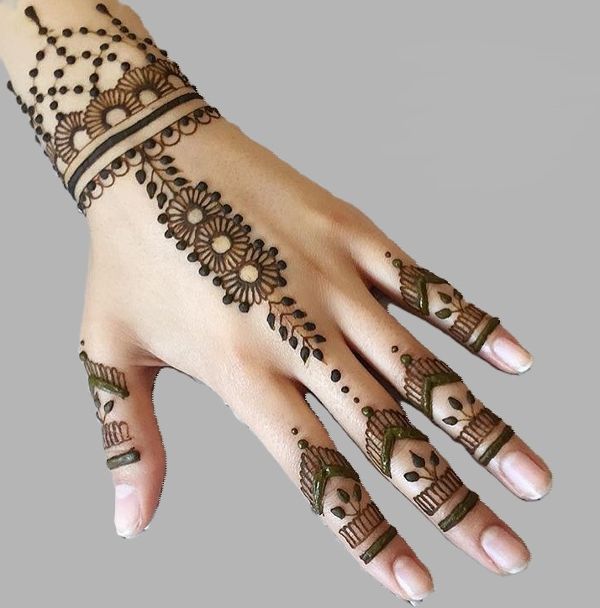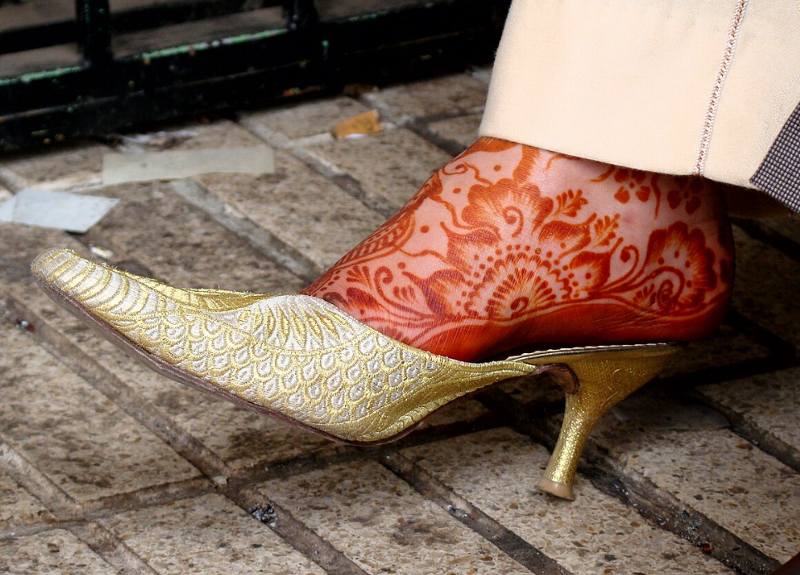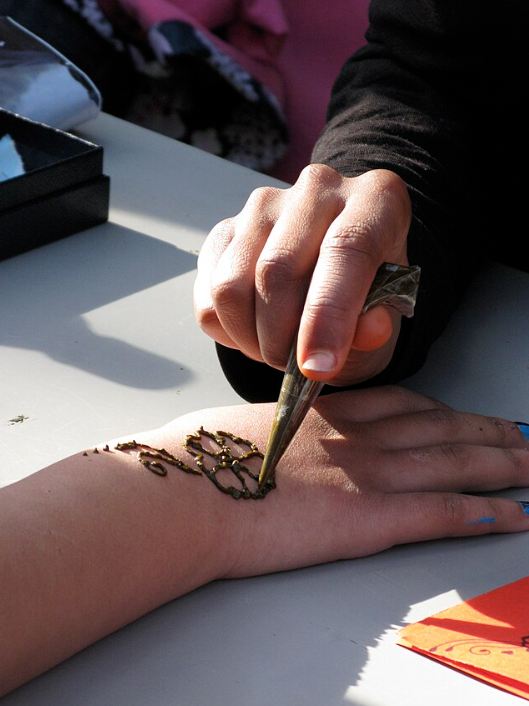Mehndi and henna
The art of applying henna to the body in intricate patterns is known as mehndi.

Photo of a simple Mehndi design provided by Wiki Media.
This term originates in South Asia, where the tradition is most prominent. In Western countries, it's sometimes referred to as a henna tattoo, though it's important to note that henna is temporary and doesn't involve needles like a real tattoo.
Mehndi: The Super Cool Henna Art
Ever been scrolling through social media and stumbled upon someone with intricate designs on their hands? Those are most likely Mehndi creations!
Mehndi, also known as henna, is basically a temporary tattoo. It's a centuries-old art form that's still super popular today, especially in South Asia, Africa, and the Middle East. More than a sticker or decoration, Mehndi is steeped in tradition and symbolism. Before we get to that, let's break down the basics.
Not done with ink
Mehndi is created with dried henna, which is crushed into a fine powder. This powder is then mixed with water or other liquids to create a paste. The paste is what gets applied to the skin, leaving behind a beautiful reddish-brown stain. The longer you leave the paste on, the darker and richer the stain becomes.
Designs can be anything from simple dots and swirls to elaborate floral patterns, paisleys, and geometric shapes. Some artists even incorporate figures and calligraphy into their work. It's all about personal preference and the occasion.
Mehndi is best done on healthy skin. If you have skin problems, address those first.

Photo of mehndi decorations on a lady's food provided by Wiki Media.
Mehndi is more than a decoration.
While Mehndi definitely makes for stunning body art, it's also deeply rooted in tradition. In many cultures, Mehndi is a celebratory art form, especially for weddings. It's seen as a way to bless the bride and groom, bringing them good luck and prosperity in their new life together.
Some cultures believe the intricate designs ward off evil spirits, while others say the application process itself is a time for bonding and celebration with loved ones. I say a loving touch is always healing, so where do I sign up?
Mehndi is more than just a pretty stain - it's a cultural and healing experience!

Photo of Mehndi application provided by Wiki Media.
First time experiencing mehndi?
If you're ever at a wedding or cultural celebration where Mehndi is happening, don't be shy. In most cases, you will be welcome to get some designs done.
Depending on your location, you may find Mehndi artists who can create custom designs for you.
Mehndi is temporary, typically lasting a week or two, so have fun with it!
Henna is also used in herbal medicine.
Photo of henna plant provided by Wiki Media.
The henna plant (Lawsonia inermis) actually has cooling properties when applied to the skin, so people in hot climates use it to help regulate body temperature.
Henna leaves contain natural antibiotics and antifungal properties. External applications soothe things like dandruff, eczema, and even some fungal infections.
Henna poultices can help with minor wound healing and reduce inflammation. This makes it useful for minor scrapes and everyday kitchen burns.
Henna can sometimes help ease pain and discomfort. Think of it as a natural pain reliever for joint and muscle aches.
Henna is generally safe for topical use, but ingesting it can be dangerous. There are some reports of serious health problems linked to consuming henna, so do not take it internally. Do not add it to tea or food.
Even when used externally, henna can cause allergic reactions in some people. It's always a good idea to do a small patch test first to make sure your skin tolerates it.
Henna leaves contain a compound called lawsone.
Lawsone is responsible for the plant's dyeing properties. Lawsone produces a reddish-brown dye that has been used for centuries to dye skin, hair, and textiles. It is also used in conditioners.
The henna plant
Henna is a fast-growing evergreen shrub that can reach up to 15 feet tall. It has small, oval-shaped leaves and clusters of fragrant white or yellow flowers. The plant prefers full sun and well-drained soil. In colder climates, henna can be grown as a houseplant.
More about henna
The word "henna" comes from the Arabic word "hinna," which means "to be beautified."
*Black henna is not a true henna. It is a mixture of henna and other ingredients, including PPD (paraphenylenediamine), which can cause skin irritation and allergic reactions.
Blessings to you and yours!
Thanks so much for reading my blog. Jan.

*Note - the information on this website has not been evaluated by the Food and Drug Administration.
© 2005-2024 website design and content by Janice Boling
